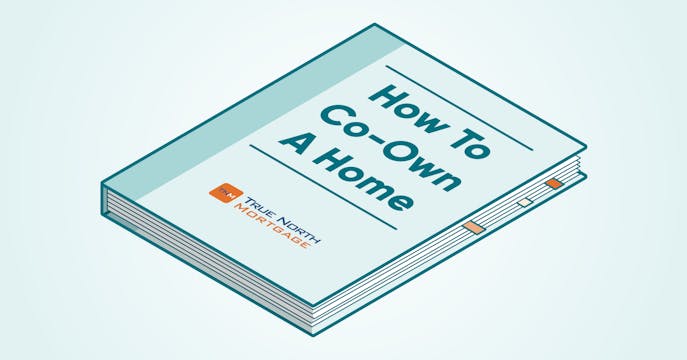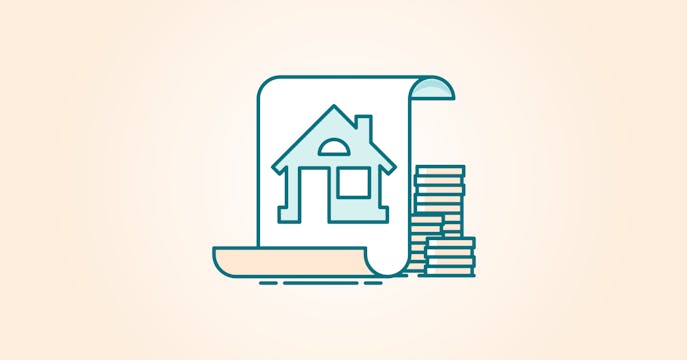Lowest Mortgage Rate in Canada. Starting from 2.49%
What's the difference between a guarantor and a co-signer?
Both commitments can help secure a mortgage approval. But one takes on more risk than the other.
Co-sign it and forget it? Sure, unless something goes wrong.
Whether a family member needs help getting into their first home or a couple wants to combine resources for a stronger mortgage application — a guarantor or co-signer can help secure the loan and the home that goes with it.
There are distinct and important differences between these two third-party options:
- A guarantor is added to the mortgage but not the home's title. Liable for the mortgage payments ('guaranteeing' that they'll be regularly paid), a guarantor does not assume ownership of the home.
- A co-signer is added to both the mortgage and the home's title. A co-signer is 100% liable for the payments and assumes part ownership of the home (and so takes on more risk than a guarantor).
Guarantor (no ownership risk)
Listed only on the mortgage, not on title
- Qualified by a lender and signs mortgage agreement
- Not listed on the home's title
- Does not own or co-own the home
- Liable for payments when other avenues fail
- Payment defaults may affect credit score
- Often a family member or a close association
Co-signer (assumes ownership risk)
Listed on the mortgage and title
- Qualified by a lender and signs mortgage agreement
- Required to be listed on the home's title
- Part owner of the home and assumes both payment and 'asset' risk
- 100% responsible if payments are missed
- Payment defaults will affect credit score
- Typically a spouse or immediate family member
The Guarantor
A guarantor for a mortgage application can strengthen a primary borrower's qualification with a lender, and typically resides in the home (but not always, depending on lender requirements).
Their name will only be on the mortgage loan and not the home's title, so a guarantor doesn't have property rights or access to the equity or the home as an 'asset.' Their role is solely to guarantee that the mortgage payments will be made.
Unlike a co-signer, the guarantor typically becomes liable for default only after the lender has exhausted all other means of collection against the primary borrower.
If a guarantor dies? The guarantor's estate may be held responsible for payments if the primary borrower defaults.
The Co-signer
Like a guarantor, a financially-strong co-signer also helps the primary applicant(s) qualify for a mortgage if they don't have the income or credit standing on their own. A co-signer also typically resides in the home (but not always, depending on lender requirements).
But unlike a guarantor, a co-signer takes on more risk by assuming part ownership of the home along with mortgage liability. Their name appears on all mortgage documents, and must be registered on the home's title. As part owner, they are immediately liable if the mortgage payments are in default.
Because a co-signer is on the title, regardless of whether they actually contribute towards the monthly payments (if they're a spouse, for example), their income and assets can be at risk if the primary borrower defaults.
If a co-signer dies? Typically formed as a Joint Tenant agreement, the liability for the mortgage then transfers to the remaining co-owners, who assume equal responsibility (unless otherwise specified in the original mortgage agreement). They may need to re-qualify with the lender.
Does a co-signer already have a CMHC-insured property? CMHC doesn't allow co-signing for another CMHC-insured mortgage. (Mortgage default insurance is required when buying a home with less than a 20% down payment.) Two other insurer options available in Canada (Sagen and Canada Guaranty) may allow co-signing.
Can you choose a guarantor role to reduce financial exposure?
High-earning professionals or those at increased risk of being exposed to litigation (e.g. a doctor or a lawyer) may seek a guarantor role to protect their home's value from litigants.
But, not all lenders will allow a guarantor, or they may have specified requirements on a case-by-case basis. It's best to ask your expert True North Mortgage broker about your options, as they can access several lenders and products to find your best fit.
As a guarantor or co-signer, can you exit the agreement?
Acting as a guarantor or a co-signer for a mortgage loan is a legal financial commitment and shouldn't be taken lightly. But that doesn't necessarily mean it's permanent.
Need to exit, and the primary applicant's financial situation has improved? Over time, the primary borrower may have strengthened their income or credit standing. At that point, both the primary applicant(s) and the signing parties can request the lender to reconsider the application to remove the co-signer/guarantor from the loan (fees may apply).
If you're attempting this change before the end of your current term, however, there may also be penalties charged by the lender (for breaking the contract early).
Need to exit, but the primary applicant(s) isn't able to qualify on their own? If the primary borrower still isn't in a position to go it alone, an expert True North Mortgage broker may be able to help find an alternative lending arrangement. If a viable lending option isn't available, the guarantor or co-signer may not be able to exit the agreement.
Get it right the first time — with us.
Each lender can have different rules and requirements surrounding the use of a guarantor or co-signer to secure a mortgage approval, including our in-house lender, THINK Financial. And depending on circumstances, approvals may need to be handled on a case-by-case basis, especially if the 'helper' isn't a family member or if they won't be residing in the home.
Talk to us! No matter how complicated you think your mortgage needs are — we make it easy. Our friendly, highly trained brokers can access the product and lender to help get you from pre-approval to home ownership, including leaning on guarantor and co-signer options.
Plus, getting your absolute best rate through our volume discount can help save thousands for all involved, and offer lower mortgage payments in the first place.
Need other mortgage-saving ideas? We've got those, too.
Wherever you are in Canada, we're here to help — online, over the phone or at one of our stores. Give us a shout!
Your easy mortgage process is right here.
Super-helpful mortgage advice

Your Guide to Co-Ownership of a Home
To afford a home in high-priced markets, the idea of co-owning is gaining steam.

Multigenerational Mortgages
Buying with family may help you afford a home and share other perks.

Pre-Qualify in Minutes
Know before you go (house hunting, that is). Get pre-approved fast, hold your best rate.

